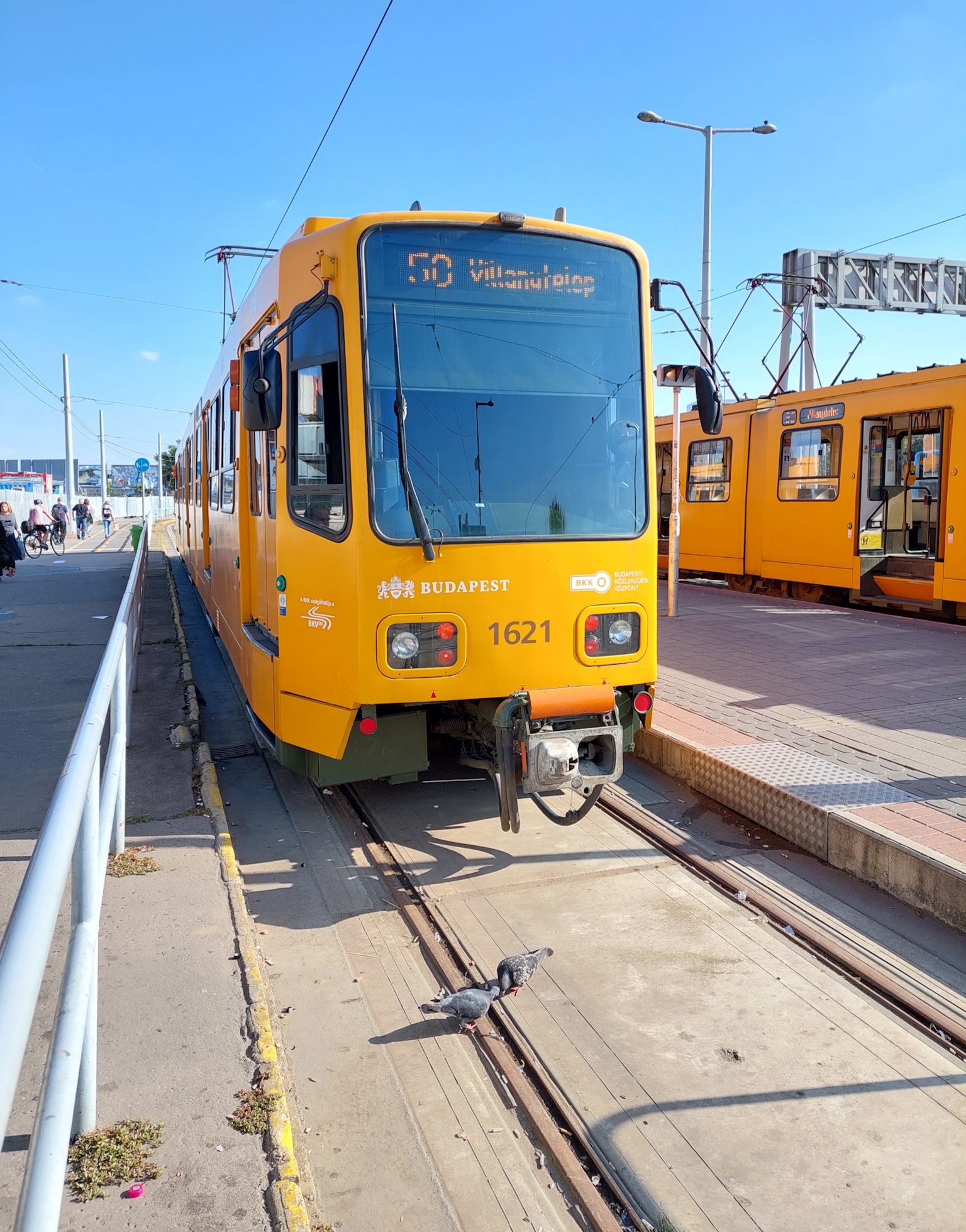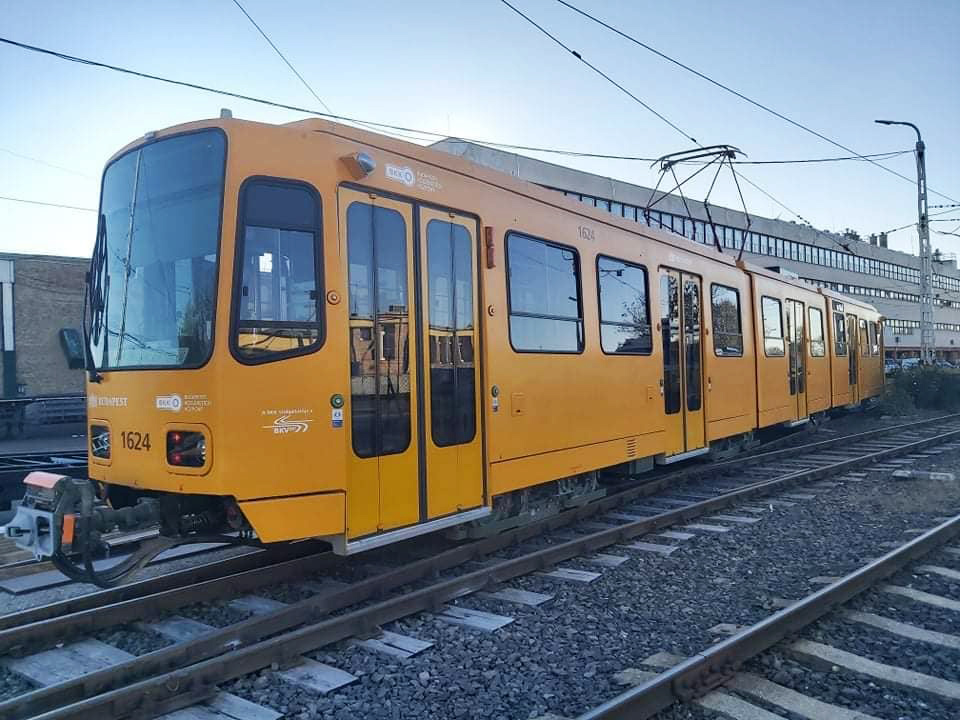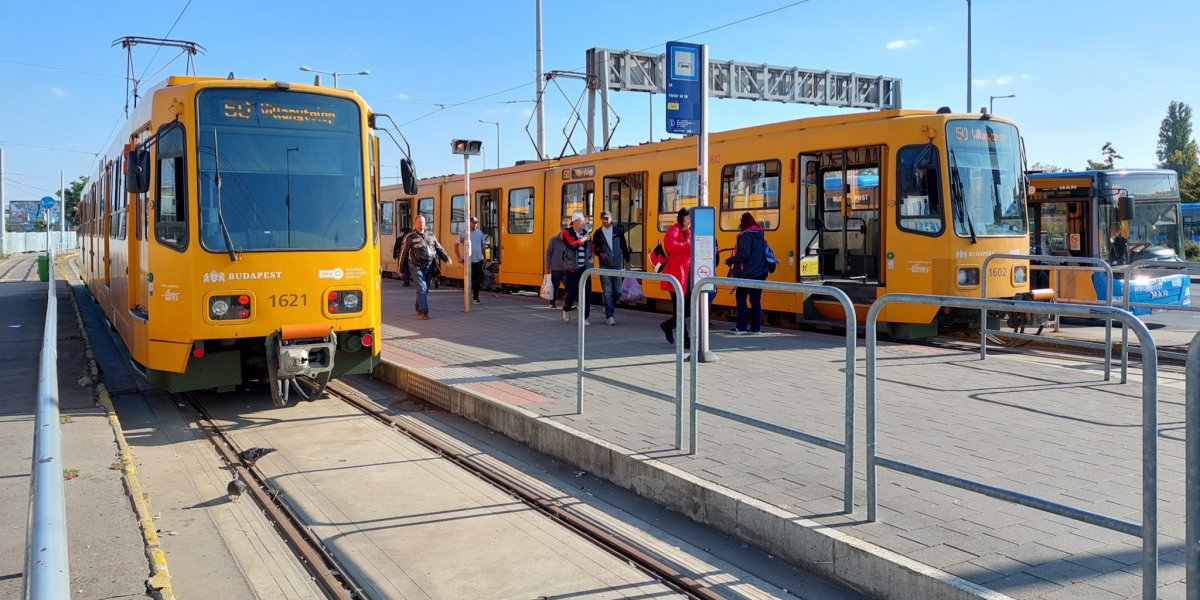The city of Hannover held a world exhibition in 2000, and the huge event required the purchase of a number of new trams. However, by the end of the World’s Fair, the city no longer needed as many trams as it had during the show, so it advertised for sale its older but perfectly good TW 6000 vehicles with an average age of 25 years. Two cities applied for the offer, The Hague and Budapest. The most modern types of the Hungarian capital at that time were the 15-20-year-old Tatra T5C5 trams, and even UV trams older than 40 years were still operating. The German vehicles offered for sale - despite that they were contemporaries of the Tatras - were much more modern than the Czech vehicles of about the same age as them. The acquisition of used trams was a significant improvement for the Budapest tram park.
 The Hanover tram on line 50, at the Határ Road terminus (Photo: Balázs Both / pestbuda.hu)
The Hanover tram on line 50, at the Határ Road terminus (Photo: Balázs Both / pestbuda.hu)
How was the tram in Hanover different from the other trams in Budapest at that time? Primarily in that it was not just a tram, but also a Statdbahn (i.e., an urban high-speed tram) and an underground train. Hanover specifically ordered this type to serve these three purposes together, which is why the door has been designed so that if the car stops next to a high platform, it does not open its stairs, but passengers can immediately enter a passenger compartment level with the platform. Unfortunately, this function could never be used by the tram in Budapest, and passengers hate it, it is uncomfortable and fails relatively often.
On top of all that, the vehicles offered a whole different travel experience than the capital’s tram park 20 years ago. The daily Magyar Hírlap wrote about them after their press presentation on 20 June 2001:
“Although the trains are yellow, according to the experience of the correspondent of Magyar Hírlap, they cannot be compared to the trams operating in Budapest today. Wagons glide on the rails as quietly and smoothly as intercity trains. Unlike other vehicles of BKV, the windows can be easily lowered and the floor of the passenger compartment is no higher than other trams or buses. Moreover, those gathered found it easier to board the Hanover trams than the Ganz trams on lines 4 and 6. The seats are are comfortable despite that they are made of hard plastic. At first glance, they seem vandal-proof, at most one can jot on the chairs. The tram is fast and easy to accelerate, and experts say it consumes little energy. ”
Indeed, trams were faster and consumed less than domestic vehicles at the time, were able to feed braking energy back into the system, had more modern control systems and passenger information systems, and had different logic in the design of the passenger compartment - for example in the placement of indicators and the arrangement of the seats - than the previous capital vehicles.
As the city of Hanover continued to use the type, the supply of parts was resolved. In the end, not 68 but 76 trams arrived in Budapest in 2001, where they were put into traffic on 3 October 2001, after being refurbished and repainted - and after minor modifications, such as the installation of new mirrors - they started operating on tram line 3, which was newly formed by connecting trams 13 and 63 in Örs vezér Square.
The wagons are 28 meters long, they were back then the longest in Budapest, 2.4 meters wide (i.e. wider than the Ipari Csuklós, but narrower than the Tatra trams), a vehicle weighs over 38 tons and could travel at speeds of up to 80 kilometers per hour if it was not limited to 50. The tram has 46 seats and 104 people can travel on it. One of the disadvantages, which resulted from the use of the German high platform, was that the floor level was higher than that of the other vehicles in Budapest, nearly one meter, 943 mm.
 The Hanover tram No. 1624 with air conditioning, experimentally converted to having a fixed stair (Photo: VEKE / Facebook)
The Hanover tram No. 1624 with air conditioning, experimentally converted to having a fixed stair (Photo: VEKE / Facebook)
A tram was upgraded by BKV in late 2020, early 2021, and this tram, with track number 1624, began trial runs in March. On the tram, the opening stairs were replaced with fixed ones, which made the doors different, with air conditioning, new windows and a closed driver's cabin. If it works, it is likely that more trams will be rebuilt this way.
The trams from Hanover were almost immediately called “bananas” by the people of Budapest because they were originally green in Hanover, but in Budapest, they ripened and turned yellow. True, for the past 20 years, it has been referred to more as Hanoverian.
Purchasing trams provoked a great deal of controversy 20 years ago, but then there was no economic way to buy new trams. In recent years, vehicles have proven successful, so much so that BKV has bought more of this tram in several waves. Although they are slowly aging, they are still typical in Budapest's tram transport.
Cover photo: The Hanoverian tram (Photo: Both Balázs / pestbuda.hu)




































Hozzászólások
Log in or register to comment!
Login Registration